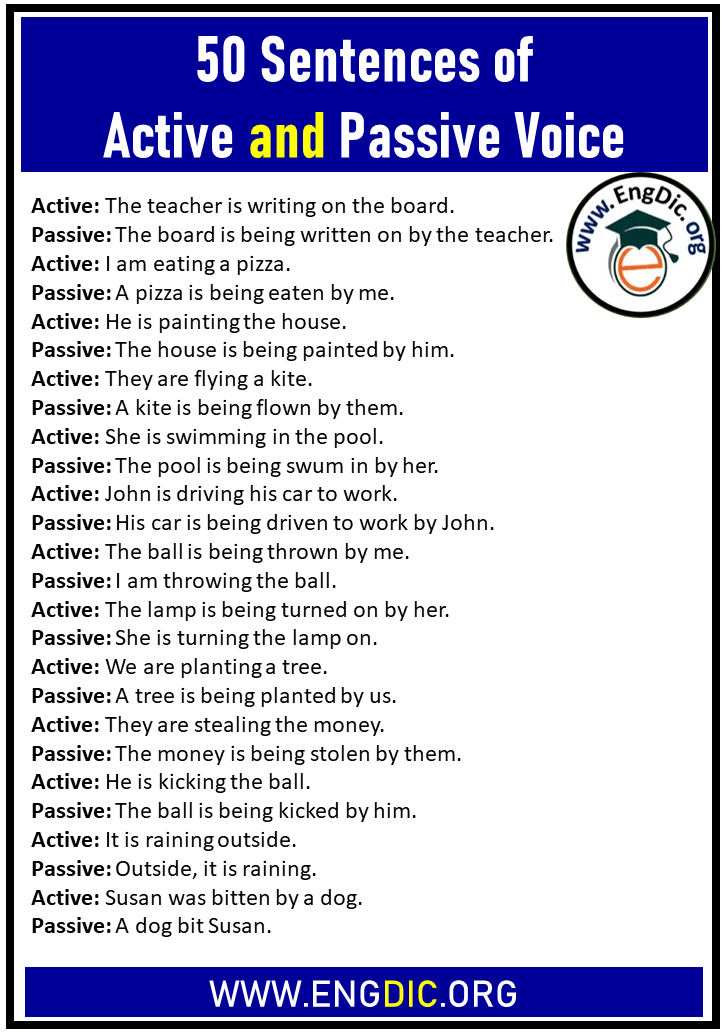When it comes to writing, understanding the difference between active and passive voice sentences is crucial. Both forms of writing have their own unique characteristics that can impact the clarity and effectiveness of your message. By knowing when to use each type of sentence, you can improve the overall quality of your writing.
Active voice sentences are those in which the subject performs the action of the verb. These sentences are direct, concise, and typically easier to understand. On the other hand, passive voice sentences are those in which the subject receives the action of the verb. While passive voice can be useful in certain situations, it can often lead to wordy and less engaging writing.
Examples of Active and Passive Voice Sentences
Let’s look at some examples to better understand the difference between active and passive voice sentences:
Active Voice: The chef prepared a delicious meal for the guests.
Passive Voice: A delicious meal was prepared for the guests by the chef.
In the active voice sentence, the chef is the subject performing the action of preparing the meal. In the passive voice sentence, the meal is the subject receiving the action of being prepared.
Active voice sentences are often preferred in writing because they are more direct and engaging. They make it clear who is performing the action and can help to keep your writing concise and to the point. Passive voice sentences, on the other hand, can be useful when the focus is on the recipient of the action rather than the doer.
It’s important to note that both active and passive voice sentences have their place in writing. The key is to use them appropriately based on the context and purpose of your writing. By understanding the differences between the two, you can improve the clarity and effectiveness of your writing.
In conclusion, active and passive voice sentences each have their own unique characteristics that can impact the clarity and effectiveness of your writing. By knowing when to use each type of sentence, you can enhance the quality of your writing and better communicate your message to your audience.
